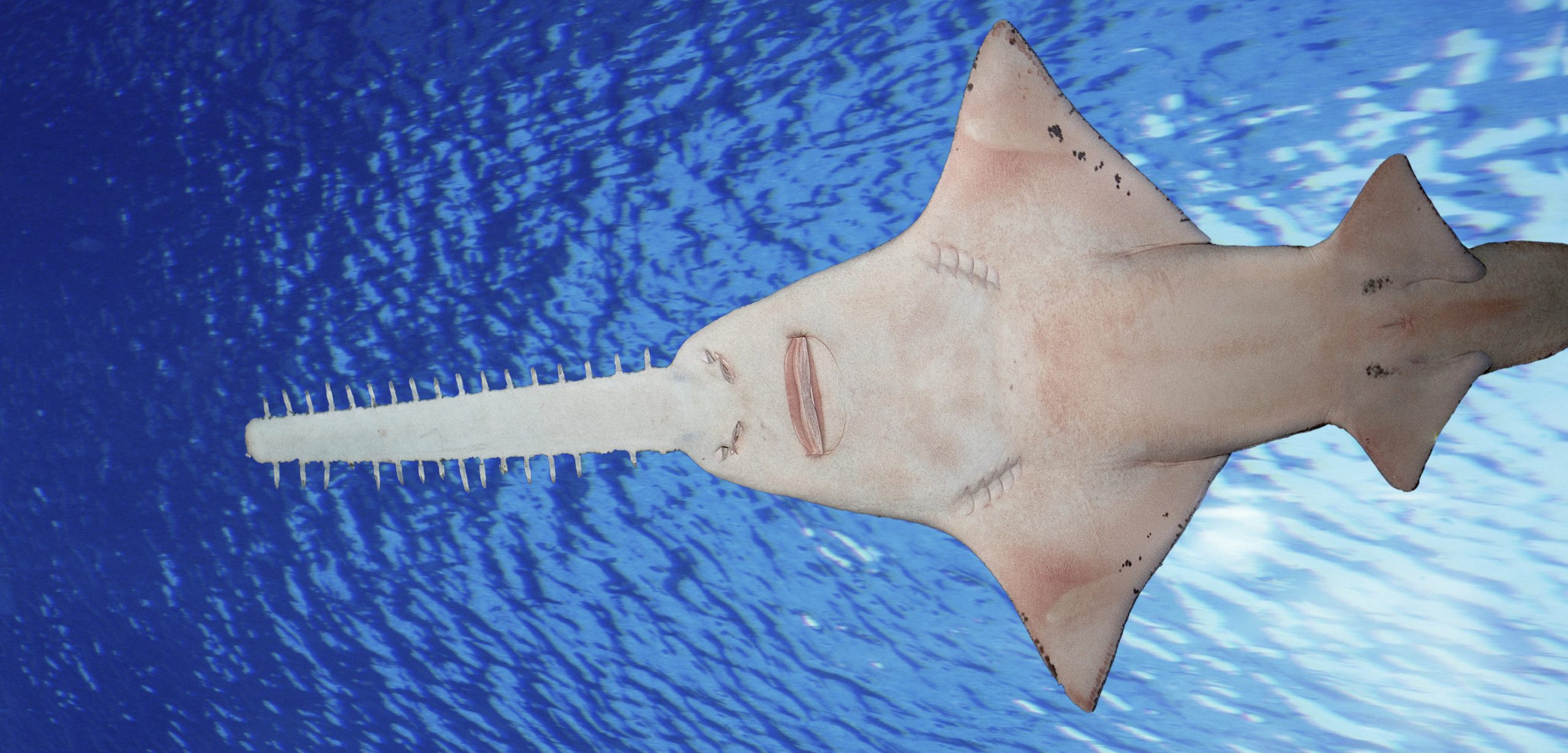Virgins Gone Wild
No need for males: wild sawfish can reproduce asexually.
Article body copy
Tales of virgin births seem better suited to the pages of religious texts than scientific journals, but surprisingly, the saintly phenomenon is very real. Though asexual reproduction is common among microbes and plants, virgin births are rare in complex animals. Less than 0.1 percent of vertebrate animals can reproduce this way, and no virgin birth has ever been detected in the wild—until now.
With their tooth-covered snouts and shark-like bodies, sawfish are one of the strangest animals to traverse the world’s oceans. And thanks to a discovery that female sawfish can reproduce without any help from males, they’ve just gotten a bit weirder.
“We were completely surprised,” says Andrew Fields, the lead author on the report describing the find. Sawfish are critically endangered, and Fields discovered evidence of virgin births, or “parthenogenesis,” by accident, he says, while working on a “genetic checkup” to monitor smalltooth sawfish numbers along Florida’s Atlantic coast. “Up until now, [this kind of] parthenogenesis seemed to be a mere curiosity in captivity, but now it could be something happening in many species in the wild and we just hadn’t looked.”
From snakes and Komodo dragons to blacktip sharks, all previously discovered cases of parthenogenesis were either detected in animals in captivity or the offspring didn’t survive. In each case, the evidence of asexual reproduction was found by comparing the mother’s DNA to that of her offspring, much like a human paternity test. But Fields and his colleagues’ work unraveled this mystery another way. Using a genetic analysis program called STORM, which helps find patterns of relatedness, he says that he “noticed that several female sawfish had [less genetic diversity] than normal.”
In normal sexual reproduction, an embryo is formed when an egg is fertilized by a sperm, with each contributing half of the embryo’s genetic material. But during parthenogenesis, another type of cell, called a “polar body,” replaces the sperm and takes on the job of fertilization. Because the mother also produces the polar body, it is genetically identical to the egg. As a result, animals born through parthenogenesis have less variability in their DNA.
Of the 190 sawfish that Fields and his team sampled, tagged, and released, three percent showed this reduced genetic variability. The only logical explanation, he says, is that they found the first case of vertebrate animals that are healthy, wild, and virgin-birthed.
In hopes of finding out more, Fields worked with molecular ecologist Demian Chapman, who discovered parthenogenesis in blacktip sharks in 2008. “Living young is really what sets this [discovery] apart,” says Chapman. “And because all of the sawfish species are in serious trouble, I think it’s likely that the others might be reproducing this way as well.”
Though sawfish were once found in the water off more than 90 countries, rampant overfishing has caused them to all but disappear. Those that remain are found only in two strongholds: along Florida’s Atlantic coast and in northern Australia. The ability to reproduce asexually could be keeping sawfish populations from plummeting even further.
“We are interested to find out if [parthenogenesis] is specific to these animals, all endangered species, or maybe is something that most sharks, rays, reptiles, and birds do,” says Fields. “But we still have a lot to learn before we can say for sure,” adds Chapman.

